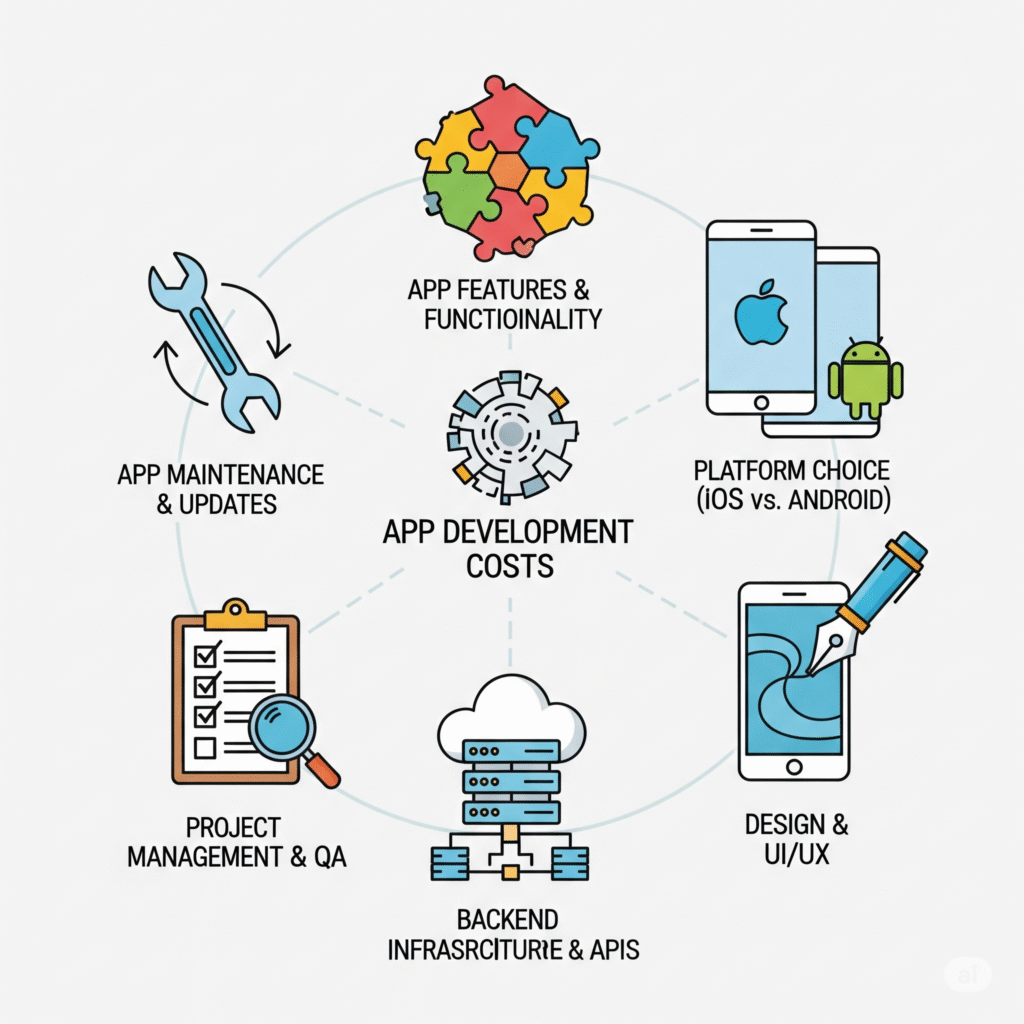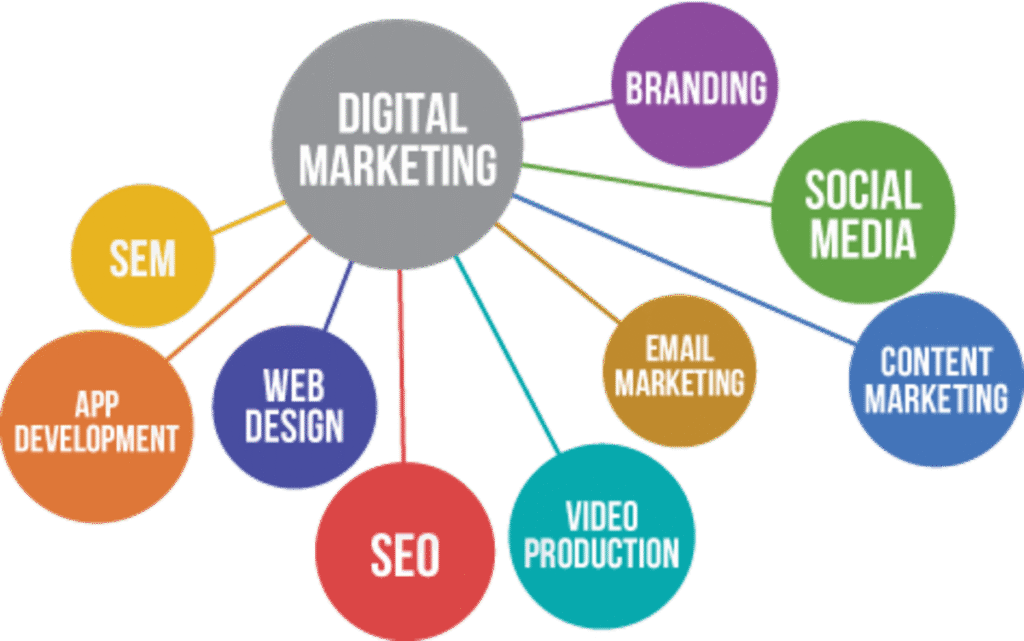
In today’s fast-paced digital world, mobile apps have become the backbone of user engagement for businesses of all sizes. From eCommerce platforms and social media tools to healthcare apps and internal business software, the demand for well-designed, functional, and secure mobile applications continues to rise. One of the most common questions for businesses and startups is: “How much does it cost to build an app in 2025?”
At Vision Ranking, we specialize in creating scalable, user-focused mobile applications that align with our client’s business goals and budgets. This detailed guide breaks down everything you need to know about app development costs in 2025, from average prices to factors that influence budgeting and strategic tips to save money.
The Average Cost of Mobile App Development in 2025
App development costs can vary dramatically based on complexity, features, platforms, and the region of your development team. Here’s a breakdown based on complexity:
| App Complexity | Estimated Cost (USD) |
| Simple App | $5,000 – $50,000 |
| Medium Complexity App | $50,000 – $120,000 |
| Complex App (AI, IoT, etc.) | $120,000 – $300,000+ |
| Enterprise-Level Solution | $400,000+ |
These prices may sound intimidating, but they include full-cycle development, testing, deployment, and often post-launch support.
Key Cost Drivers in App Development

1. App Features and Functionality
The more complex your app, the more time and resources it requires. Common features that impact cost:
- User authentication and logins
- Real-time chat or messaging
- GPS and location tracking
- In-app payments or e-commerce capabilities
- Push notifications
- Video/audio streaming
- API integration
- Machine learning (AI) features
2. Platform Choice: iOS vs. Android vs. Cross-Platform
- Native apps (iOS or Android): Higher performance but more expensive
- Cross-platform apps (Flutter, React Native): Faster and cheaper, but can limit design flexibility in some cases
3. Design & User Interface (UI/UX)
A clean, intuitive, and accessible interface requires research, user testing, and creativity. Investing in quality UI/UX design improves retention and boosts ROI.
4. Backend Infrastructure & APIs
Apps that require data synchronization, cloud storage, or third-party API integrations need a strong backend, increasing both cost and development time.
5. Project Management & QA
Don’t overlook planning, testing, and communication. Effective project management and continuous quality assurance ensure your app is robust, user-friendly, and scalable.
6. App Maintenance & Updates
Post-launch costs typically run around 15–25% of your initial app development cost per year. These include:
- Bug fixes
- OS compatibility updates
- Security patches
- Feature enhancements
What’s New in App Development in 2025?
2025 has introduced several technological shifts that influence development costs:
- AI-Powered Personalization: Smarter, adaptive user experiences based on behavior data
- Voice-First Interfaces: Integration with Alexa, Siri, Google Assistant
- 5G & Edge Computing: Enabling ultra-fast, real-time features
- Augmented Reality (AR): Widely adopted in retail, healthcare, and entertainment apps
- Privacy & Compliance: Tighter regulations demand investment in data encryption and security audits
Vision Ranking’s Approach to Smart App Development
At Vision Ranking, we offer:
- Customized pricing based on your unique app concept
- A dedicated team of developers, designers, and strategists
- Transparent communication and milestone-based billing
- Agile methodology for faster delivery
- Free post-launch support for 3 months
We help you choose the right tech stack, build MVPs, and scale efficiently—all within your target budget.
👉 Learn more or get a quote: https://visionranking.com
Tips to Reduce Your App Development Costs
- Build an MVP First: Focus on core features, gather user feedback, and scale gradually.
- Use Open Source Tools: Leverage open-source frameworks and libraries to save development time.
- Avoid Scope Creep: Define your feature list early and avoid unplanned additions.
- Choose the Right Development Partner: An experienced team like Vision Ranking can optimize workflows and reduce costs.
- Prioritize Features: Launch faster with essential features, then roll out updates.
Frequently Asked Questions (FAQs)
Q1: What is the cheapest way to build an app in 2025?
Build a basic MVP using a cross-platform framework like Flutter and outsource to a trusted offshore team to keep costs low without sacrificing quality.
Q2: Can I build an app under $10,000?
Yes, basic apps with minimal features and no backend can be built within this budget, especially using no-code tools or offshore teams.
Q3: What affects the timeline of app development?
Features, team size, tech stack, and project management methodology. On average:
- Basic apps: 2–3 months
- Medium apps: 4–6 months
- Complex apps: 6–12 months
Q4: How much does it cost to maintain an app yearly?
Maintenance costs typically range between 15%–25% of your original development budget per year.
Q5: Can Vision Ranking help with post-launch scaling?
Absolutely! We provide scalable backend solutions, performance optimization, feature rollouts, and marketing support post-launch.
Final Thoughts
Building an app in 2025 is not just a technology decision—it’s a strategic investment. The cost depends on multiple factors, but with the right team and a well-defined approach, you can launch a high-quality, scalable product within your budget.
At Vision Ranking, we help businesses turn their app ideas into impactful digital solutions. From ideation to execution, we’ve got you covered.
👉 Need help building your next app? Contact us today at visionranking.com and get your free consultation.


